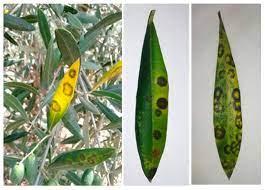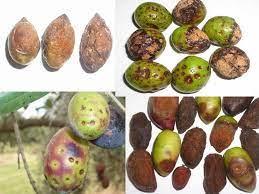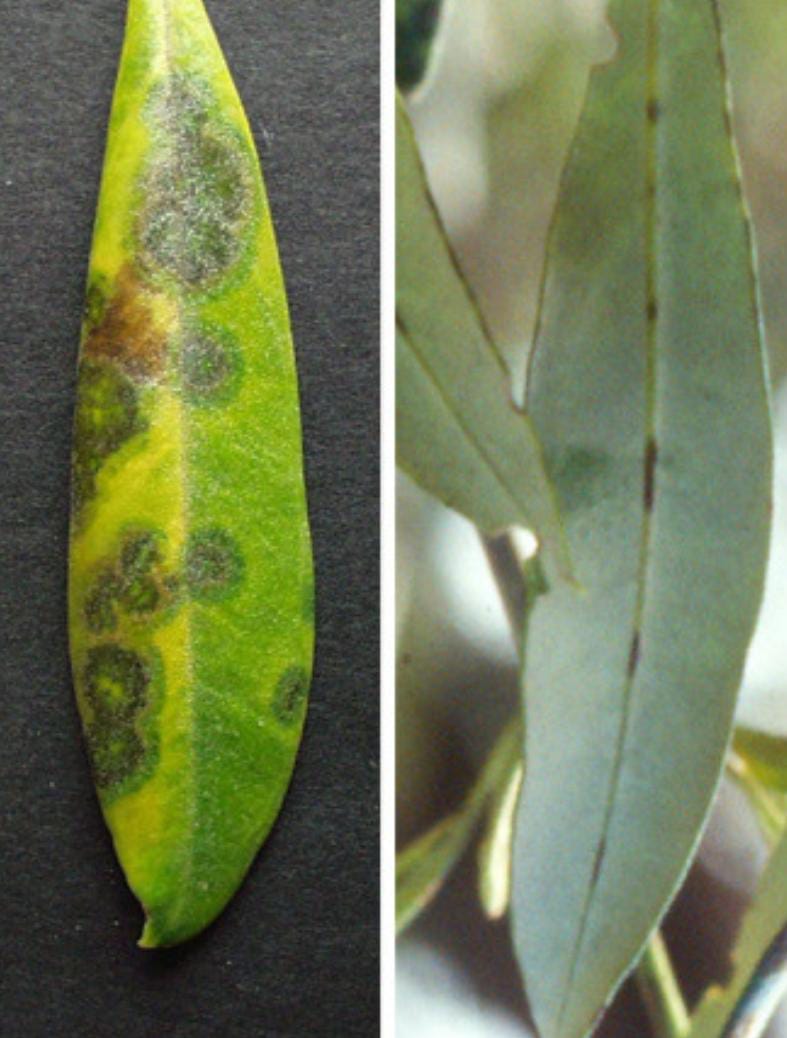Autumn Olive
Autumn olive shrubs, 10-16 feet tall in Zones 3-8, exhibit fast growth in well-drained soil under full sun to partial shade. Known for their small and edible red berries, autumn olives are valued for their adaptability.

Habit
Shrub
Height
3-6 m
Growth
Fast
Soil
Well-drained sandy loam
Shade
Full sun to partial shade
Moisture
Moderate
Edible
Yes
Medicinal
Yes
Origin
Asia
Climatic Condition
Temperate
Temperature (°)
15-25°C
Humidity (%)
60-80%
Potting media
Garden soil
Fertilizers
Minimal fertilization
Watering
Drought-tolerant; water sparingly
Plant Weight
3-5 kg
Flowering Time
Spring
Soil Ph level
6.0 - 7.5
Water Ph level
6.0 - 7.0
Soil EC
Medium
Yield Per Plant
5-10 kg/plant
NPK ratio
10:10:10
life Span
Perennial
Health Benefits
Fruits are high in antioxidants; used in traditional medicine.
Suggested Grow Media or Potting Mix ?
50% loamy soil, 30% compost, 20% sand
Suggested Fertigation/Fertilizers
Fertilize every 2 months with a balanced fertilizer.
Common Diseases and Remedies
olive leaf spot, Olive anthracnose
The first symptoms on upper leaf surface are characterized by circular brown green spots, the disease can causes chlorosis and necrosis of leaves.
use of natural antifungal products
HEALTH BENEFITS
1. High in Antioxidants
Autumn olive berries are rich in lycopene, a powerful antioxidant that may help reduce the risk of cancer, heart disease, and other chronic illnesses. In fact, they contain up to 17 times more lycopene than tomatoes!
2. Supports Heart Health
The flavonoids and other polyphenols in the berries help reduce inflammation, improve blood circulation, and lower the risk of cardiovascular diseases.
3. Boosts Immunity
These berries are packed with vitamin C, which strengthens the immune system, fights infections, and promotes healthy skin.
4. Regulates Blood Sugar
Some research suggests that autumn olive may help regulate blood sugar levels, making it beneficial for people managing diabetes.
5. Promotes Eye Health
The high levels of carotenoids in autumn olive contribute to good vision and may help prevent age-related macular degeneration.
6. Anti-Inflammatory Properties
Compounds in autumn olive have natural anti-inflammatory effects, which can help with conditions like arthritis and general inflammation-related diseases.
7. Good for Gut Health
Autumn olive contains dietary fiber, which supports digestion and promotes a healthy gut microbiome.
What is the Autumn Olive Tree?
Autumn olive (Elaeagnus umbellata) is a deciduous tree or small tree in Southeast Asia. It is also known as Japanese silverberry, umbrella flower or Autumn Fruit. The plant takes its name from its fruit, which ripens in autumn and resembles hazelnuts in size and shape, but it has nothing to do with the olive tree (Olea europaea). This fruit is sour and rich in lycopene, an antioxidant. The plant is considered invasive in some areas outside its native range, including parts of North America where it has been introduced for erosion control and wildlife.

What Are The Different Types Of Autumn Olive?
1. Cardinal
Known for its large, sweet fruit.
2. Sweet Scarlet
Another variety with large, sweet fruit.
3. Red jewel
A variety with small but very sweet fruits.
4. Amber
Yellow-fruited variety with lower acidity than red fruits.
How To Care Autumn Olive?
Location
Autumn olive (Elaeagnus umbellata) is native to Southeast Asia, including China, Japan, and Korea. It has been introduced to other parts of the world, including North America, where it is considered invasive. It occurs in North America, in the eastern and central United States and parts of Canada. It likes open, sunny places and can adapt to different soil types, such as poor soil, sand or gravel.
Sun light
Autumn olive (Elaeagnus umbellata) is a plant that loves plenty of sun. It can tolerate partial shade, but blooms less and produces less fruit in the shade. For good growth and fruit production, it is best to plant autumn olives in a location that receives at least 6 to 8 hours of direct sunlight per day.
Soil
Autumn olive (Elaeagnus umbellata) is a hardy plant that tolerates many soil types, including poor soil, sand or gravel. However, it prefers well-drained soil with a pH of 6.0 to 7.5. It tolerates slightly acidic and slightly alkaline soils. It is important not to plant autumn olives in waterlogged or poorly drained soil, as this can lead to root rot and other problems. Adding organic matter such as compost or well-rotted manure to the soil can help improve the soil structure and fertility of your fall olives.
Hydration
Autumn olive (Elaeagnus umbellata) is a drought-tolerant plant that can withstand drought. However, it is important to provide sufficient water during the production period (usually the first year after planting). During this time, help the plant develop a strong root system by watering it regularly, especially during drought. Autumn olives can tolerate periods of drought once established, but will benefit from deep watering during long droughts. It is important to avoid overwatering as this can lead to root rot and other problems.
Nourishment
Autumn olive (Elaeagnus umbellata) is a nitrogen-fixing plant, meaning it can absorb nitrogen from the air and convert it into a form that plants can use. This ability allows autumn olives to grow in poor soil and increase soil fertility over time. However, like all plants, autumn olives need other nutrients such as phosphorus, potassium and micronutrients to grow and develop.
Issues
Although the autumn olive (Elaaeagnus umbellata) is a hardy and adaptable tree, some problems can arise when growing it:
1. Invasion Potential: Autumn olive may become invasive in some areas outside its native range, eliminating similar plants and destroying the ecosystem. Before planting, be sure to check with your local government or extension service to determine whether fall olives are available in your area.
2. Pests and diseases: Autumn olives are generally resistant to most pests and diseases, but they are susceptible to some pests such as aphids and beetles, as well as some fungal diseases such as rust and powdery mildew. Good cultural practices, such as planting in well-drained soil and ensuring adequate air circulation, can help prevent these problems.
What Are The Benefits Of Autumn Olives?
Autumn olive (Elaaeagnus umbellata) has many benefits:
1. Wildlife Attraction: The fruits of autumn olives are rich in lycopene, an antioxidant, and are a valuable food for birds and other wildlife, especially in autumn and winter when other foods are scarce.
2. Soil Improvement: Autumn olive is a nitrogen fixing plant, meaning it can absorb nitrogen from the air and convert it into a form that the plant can use. This ability allows autumn olives to grow in poor soil and increase soil fertility over time.
3. Prevention of Spread: Autumn olive's thick leaves help prevent soil erosion, making it a good choice for planting in upland areas or areas prone to erosion.
4. Ornamental value: Autumn olive has beautiful foliage and spring yellow flowers, making it a popular choice as an ornamental plant.
5. Edible Fruit: The fruits of autumn olives are sour and rich in lycopene, an antioxidant. It can be eaten fresh or used to make jams, jellies and other preserves.
FAQs About Growing autumn olive?
1. How to care for autumn olive trees ?
Processing of autumn olive (Elaagnus umbellata) plants consists of several important steps:
1. Water: Water olive trees fresh regularly in the fall during their first year to help create a strong foundation. Once established, they are drought tolerant and only need minimal watering during long droughts.
2. * Pruning *: Prune your autumn olive plants in late winter or early spring to remove dead or damaged branches and similar vegetation. Pruning can also help improve air circulation and reduce the risk of disease.
3. FERTILIZER: Apply a balanced fertilizer such as 10-10-10 or 20-20-20 fertilizer in the spring before new growth begins. Follow the fertilizer label instructions to learn how much and when to apply.
4. Mulch: Apply a layer of mulch around the base of the plant to help retain moisture, remove weeds and improve the soil. Use organic mulch, such as sawdust or shredded leaves, and cover it to a depth of 2 to 4 inches.
5. Weeding: Regularly remove weeds from the base of the plant to reduce competition for water and nutrients.
6. Pest Control: In autumn, check your olives for diseases and pests such as aphids, scale insects, rust or powdery mildew. Treat any problems immediately with a suitable insecticide or fungicide.
2. How to use autumn olives?
Autumn olive (Elaeagnus umbellata) has many uses:
1. Wildlife Attraction: The fruits of autumn olives are rich in lycopene, an antioxidant, and are a valuable food for birds and other wildlife, especially in autumn and winter when other foods are scarce.
2. Soil Improvement: Autumn olive is a nitrogen fixing plant, that is, it can absorb nitrogen from the air and convert it into a form that plants can use. This ability allows autumn olives to grow in poor soil and increase soil fertility over time.
3. Prevention of Spread: Autumn olive's thick leaves help prevent soil erosion, making it a good choice for planting in upland areas or areas prone to erosion.
4. Ornamental Value: Olive has beautiful silvery leaves in autumn and yellow flowers in spring, making it a good choice for ornamental planting.
5. * Edible fruits *: The fruits of the autumn olive are sour and rich in lycopene, an antioxidant. It can be eaten fresh or used to make jams, jellies and other preserves.
6. Drought Tolerance: Autumn olive is a drought-tolerant plant that can withstand one drought.
3. Can I grow fruit trees indoors?
Autumn olive (Elaagnus umbellata) is often grown outdoors because it needs full sun and well-drained soil to thrive. However, you can grow olives in containers indoors if you provide the right conditions:
1. Light: Autumn olives need plenty of sunlight to grow and bear fruit. Place the container near a south-facing window or provide supplemental lighting to ensure the plant receives at least 6 to 8 hours of direct sunlight each day.
2. Soil: Use a well-drained potting mix designed for container gardening. You can add perlite or sand to improve drainage.
3. Water: Water your plants regularly so the soil is evenly moist but not waterlogged. Allow the topsoil to dry out from water.
4. Fertilization: Apply a balanced fertilizer such as 10-10-10 or 20-20-20 fertilizer every 4 to 6 weeks during the growing season.
5. Pruning: Prune your plants regularly to maintain their shape and size. Remove dead or damaged branches and eliminate crowding.
6. Pollination: Autumn olives are self-pollinating, but they benefit from hand pollination to ensure good fruit quality. Use a small brush to transfer flowers from one flower to another.
4. What is the best type of pot for planting olives in autumn?
When growing autumn olive (Elaagnus umbellata) in containers, it is important to choose a pot that provides enough water and space for the plant's roots to grow. Here are some tips for choosing the best flowers:
1. SIZE: Choose a pot that is at least 18 to 24 inches in diameter and 18 to 24 inches deep. This will provide enough room for the plant's roots to grow and allow for proper drainage.
2. * Materials *: Choose a pot made of durable materials such as plastic, ceramic or terracotta. Do not use metal pots as they can heat up in the sun and damage plants.
3. Drainage: Make sure there are drains at the bottom of the pot to drain excess water. You can add a layer of rocks or broken pottery to the pelvic floor to improve drainage.
4. Weight: Be aware that large pots filled with soil and autumn olives can be heavy. Choose a sturdy and durable pot, especially if you plan to move it frequently.
5. Aesthetically pleasing: Choose a pot that complements the plant's leaves and flowers. Consider the color, shape and style of your plants to create an attractive display. 0.
5. Where can I buy autumn olives?
Autumn Olive (Elaeagnus umbellata) plants are available from many sources, including:
1. * Local nurseries and nurseries *: Many local nurseries and nurseries grow a variety of plants, including autumn olives. Visit your local nursery or garden center to see if they have fall olives available for purchase.
2. Online plant stores: There are many online stores that specialize in selling plants and gardening supplies. You can search for fall fruit trees on sites like Amazon, eBay, or Etsy, or visit sites that specialize in selling plants, such as Plant Delights Nursery or Nature Hills Nursery.
3. Seed companies: Some seed companies also sell live plants, including autumn olives. Check with a seed company like Johnny's Selected Seeds or Burpee to see if olive leaf fall is available for purchase.
4. * Local Farmers *: Some local farmers markets will have vendors selling produce, including fall olives. Visit your local grocery store to see if vendors have fall olive leaves available for purchase.
5. Plant Exchange or Exchange: Some communities have plant exchanges or exchanges where gardeners can exchange or give away plants. Check with your local gardening club or community organization to see if there is a growing or swap available in your area.



